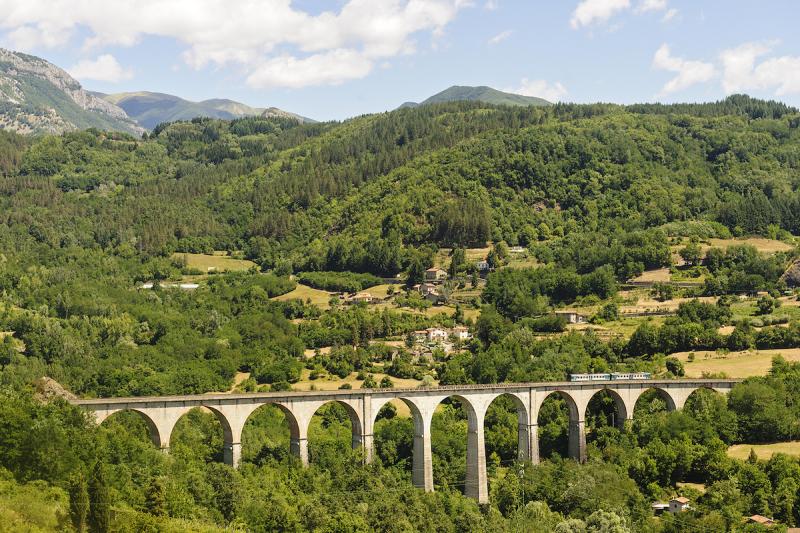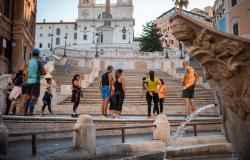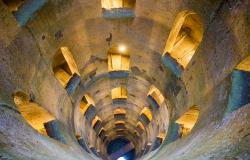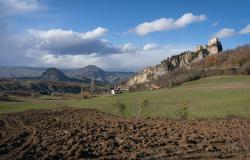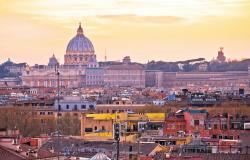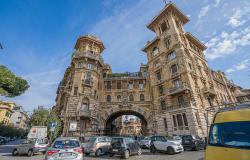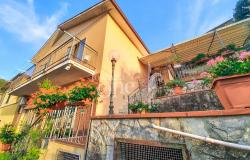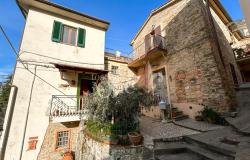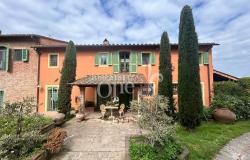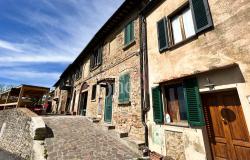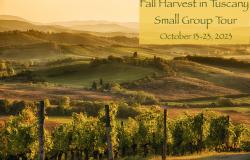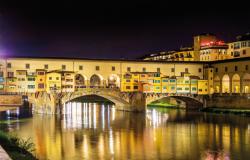2021 marks 700 years since Italy’s greatest poet, Dante Alighieri, died. Among the initiatives devoted to celebrating and remembering the author of the Divine Comedy is “il treno di Dante,” a vintage train that is scheduled to run this summer between Florence and Ravenna, respectively the cities where the poet was born and where he died, stopping in four villages along the way, places Dante himself visited.
‘Dante’s Train’ will run every weekend from Saturday, July 3 to Sunday, October 10. It is scheduled to depart Florence’s Santa Maria Novella at 8:50 am, reach Ravenna at 12:20 pm, and return to Florence at 9 pm. The round-trip ticket costs €54.50, one-way €29.
During the journey, Dante’s Train staff will narrate the history of the places Dante visited on his way into exile, places that influenced his existence and literary work, often cited in Dante’s own writings.
Train personnel will also provide information on what to visit at each train stop: museums, fortresses, theaters and palaces, which passengers can access for free by showing their Dante Train’s ticket (printed or digital) at the entrance, even on a different day from the train journey.
Included in the cost of the ticket is also 10% discount at restaurants found along the train route, with a free aperitif.
Further information will be available at special information desks set up in each station where the train stops.
So where does the train stop? Here are the four villages you can visit along the way.
Borgo San Lorenzo (Tuscany)
Once an important crossroads in the center of Mugello, Borgo San Lorenzo was acquired by the city of Florence in 1290 but remained faithful to the Guelphs, suffering several attacks by the Ghibellines in the following decades. The Guelphs and the Ghibellines were the two main political factions into which Florence was divided, supporting respectively the Pope and the Holy Roman Emperor in the city-states of central and northern Italy in the Middle Ages. Dante’s family was allied to the Guelphs.
Marradi (Tuscany)
In the area known as ‘Romagna Toscana,’ a borderland between the two regions, Marradi, whose excellent chestnuts make it a popular fall destination, is the site of an amusing legend involving Dante. It is said that Dante reported being robbed of his horse there, which he was using to flee from Florence. To that, the residents objected that the locals were all gentlemen. The origins of Marradi are quite old. The Ligurians, Etruscans and Celts lived here before the Romans conquered the area; they built the road connecting Faenza and Florence around 59 BC. Marradi thus became a place of rest and refreshment for pilgrims and wayfarers. The surrounding area is rich in woods and streams, ideal for those who love hiking, biking or horseback riding.
Brisighella (Emilia-Romagna)

The medieval village of Brisighella is listed as one of Italy’s most beautiful borghi, or historic villages. Among its highlights are the 14th-century fortress where Dante stayed at the beginning of his wanderings in Italy; the 18th-century Sanctuary of Monticino; the Clock Tower, with a great view over the surrounding hills; the Via degli Asini, an elevated road covered by arches of different types; as well as its thermal baths and excellent extra virgin olive oil.
Faenza (Emilia-Romagna)

Faenza was very well-known to Dante, who often cited characters from Faenza or connected with it in the Divine Comedy. The splendid Piazza del Popolo is the heart of the town, enclosed by two elegant arcades, with the Town Hall on one side and the Palazzo del Podestà on the other. Faenza is famous for its artisanal ceramics, produced here for centuries.
Train passengers who decide to get off at any of the four stops receive, upon request to the train assistants available in each of the three carriages, a free ticket, valid for the same day, to reach the following stops. The ticket can be used on any train that runs between Florence and Ravenna.
The vintage train used for this itinerary is a historic convoy, consisting of a D445 locomotive, three ‘Centoporte’ carriages, used between 1930 and the ‘80s, and a wagon for transporting bikes.
For more information, visit the dedicated website.
